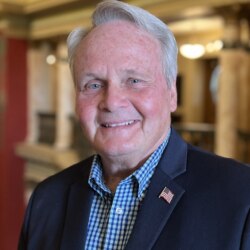Humans Are Snowflakes
"We flourish to the extent we are each free to build on our uniqueness, to make our own choices, so long as we do no harm to the equal rights of others."
The word “snowflake” has taken on a new meaning in recent years.
In April 2017, I lectured about the lessons from ancient Rome at the University of Colorado in Denver. Just minutes into the talk, some disruptive hecklers in the back of the room began shouting left-wing epithets. They didn’t like some of the points I made regarding Rome’s downward spiral into a costly welfare state.
From the front row, a man whirled around and shouted at the top of his voice, “Shut up, snowflakes!” They did.
In that context, “snowflake” refers to a whiny, self-righteous, intolerant, cancel-culture nitwit easily offended by viewpoints he doesn’t agree with. The universities are full of them, schooled as they often are by tenured professors who teach grievance, victimology, microaggression, and class warfare instead of real subjects.
A friend and former U.S. Senator Jeff Flake (now ambassador to Turkey) served one six-year term in Washington. He was proud of his last name, and even more proud of his hometown—Snowflake, Arizona.
Snowflakes in the natural world are a beautiful thing. And before we see the last of them this winter, let’s take note of their remarkable features.
No two snowstorms are alike, but a far more amazing fact is that no two snowflakes are identical either—at least so far as painstaking research has indicated. Wilson Alwyn Bentley of Jericho, Vermont, one of the first known snowflake photographers, developed a process in 1885 for capturing them on black velvet before they melted.
Bentley snapped pictures of about 5,000 of them and never found two that were the same—nor has anyone else ever since. Scientists believe that changes in humidity, temperature, and other conditions present as flakes form and fall make it highly unlikely that any one flake has ever been precisely duplicated. (Ironically, Bentley died of pneumonia in 1931 after walking six miles in a blizzard. Lesson: One flake may be harmless, but a lot of them can be deadly).
“They say that there can never be two snowflakes that are exactly alike,” wrote British author Terry Pratchett, “but has anyone checked lately?” We’ll just have to take nature’s word for it.
Montana holds the world’s record for the largest snowflake ever recorded. No kidding. This award-winning, frisbee-sized flake fell near Ft. Keogh in Custer County in January 1887. Rancher Matt Coleman discovered it. Don’t ask me how he measured and verified it, but it was an astonishing 15 inches wide and 8 inches thick.
Perhaps the biggest snowstorm in the memory of any living Montanan hit the state in February 1986. The seven-day event dumped as much as 56 inches of snow. That’s a lot of flakes—as much of the white stuff in a week as Kalispell averages per year.
Big as it was, that 1986 storm in Montana measures less than half the biggest recorded snowstorm to hit the entire country. According to the National Oceanic and Atmospheric Administration (NOAA), that honor goes to Thompson Pass, Alaska. A whopping 147 inches (more than twelve feet) fell there in just three days in late December 1955.
As amazing as each snowflake’s uniqueness is, humans share that same quality. No two of us are precisely alike, and there’s no evidence that any two humans who ever lived have been completely identical. Each one of the eight billion on the planet today, as well as the untold numbers who came before, is an unrepeated and unrepeatable entity.
The late Dr. Roger J. Williams, a biochemist at the University of Texas, put it memorably well in a 1969 speech:
All of us are basically and inevitably individuals in many important and striking ways. Our individuality is as inescapable as our humanity. If we are to plan for people, we must plan for individuals, because that’s the only kind of people there are.
This must lead us to a profound truth: Any attempt, especially by force, to homogenize or collectivize human beings is doomed to fail because it attacks our very nature. We are not robots manufactured identically on an assembly line. We flourish to the extent we are each free to build on our uniqueness, to make our own choices, so long as we do no harm to the equal rights of others.
Each one of us eight billion human beings, then, is a snowflake—in the best sense of the word. As the French say, “Vive la difference!”
*****
Lawrence W. Reed writes a monthly column for the Frontier Institute in Helena, on whose board he serves. He is president emeritus of the Foundation for Economic Education and blogs at www.lawrencewreed.com.
